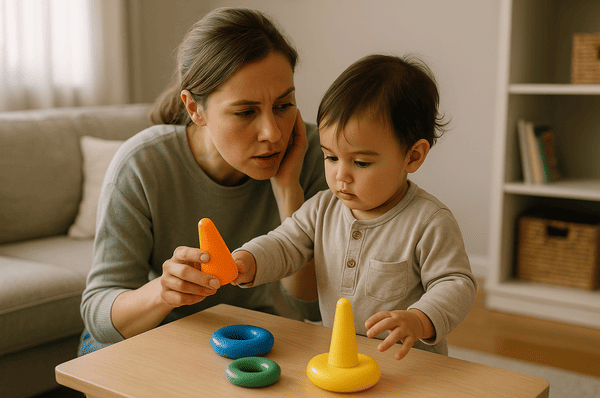Creating a safe home environment for children is essential to their health, development, and emotional well-being. As parents and caregivers, it’s our responsibility to ensure that the home is a place where children can learn, grow, and explore without unnecessary risks. A safe space fosters confidence and helps children develop independence, knowing they are protected.
Start with Basic Childproofing
Childproofing your home is the first step toward safety. Begin by getting down to your child’s level — literally. Crawl around the house to see what they might find interesting or dangerous.
Install safety gates to block stairways, cover electrical outlets, and use cabinet locks for any storage with cleaning products, medications, or sharp objects. Make sure furniture like bookshelves and TVs are anchored to the wall to prevent tipping.
Windows should have secure locks or guards, and cords from blinds should be out of reach to avoid choking hazards.
Create a Nurturing Emotional Space
Safety isn’t only physical — it’s emotional too. Children need a home environment that is calm, supportive, and filled with love. Use positive language, maintain consistent routines, and ensure that rules are clear and fair.
Listening without judgment builds trust. Children are more likely to express themselves and grow emotionally when they feel safe doing so.
Model respectful communication, avoid yelling, and let your child know their feelings matter. Emotional safety encourages resilience and healthy relationships in the future.
Supervision and Involvement Matter
Even in a fully childproofed home, supervision is crucial. Children are curious by nature and often explore their surroundings in unpredictable ways.
Supervise playtime, especially with toys that have small parts, and monitor screen time to ensure they’re engaging in age-appropriate content.
Being involved also means spending quality time with your child. Play together, read books, and engage in creative activities. This not only strengthens your bond but helps you stay aware of their needs and behavior changes.
Organize Spaces for Safety and Learning
Designate areas for specific activities. Have a quiet reading corner, a play area with age-appropriate toys, and a dining area where your child can eat safely in a high chair or booster seat.
Keep floors clutter-free to prevent tripping and ensure rugs are non-slip. Store heavy items low and fragile items high and out of reach.
In the kitchen, use back burners and turn pot handles inward. Keep knives, hot liquids, and choking hazards completely inaccessible.
These habits not only reduce the risk of injury but teach children how to safely interact with their environment.
Fire and Carbon Monoxide Safety
Every home with children should have working smoke detectors and carbon monoxide detectors. Test them monthly and replace the batteries at least once a year.
Keep matches, lighters, and candles locked away or well out of reach. Teach your child early about the dangers of fire and what to do in case of an emergency — even toddlers can begin to learn basic safety habits with simple, repeated instructions.
Create a family escape plan and practice it regularly. Familiarity with emergency procedures can make all the difference in a real situation.
Safe Sleep Practices
For infants and toddlers, safe sleep is a top priority. Always place babies on their backs to sleep and use a firm mattress with a fitted sheet. Avoid pillows, blankets, stuffed animals, or bumper pads in the crib.
Keep the crib away from windows, cords, and hanging decorations. As your child grows, transition them to a toddler bed with secure rails to prevent falls.
Sleep safety also includes routine — consistent sleep and wake times help regulate behavior and promote emotional stability.
Secure Outdoor Areas
If your home has outdoor space, make sure it’s just as safe as the inside. Fences should be sturdy and gates should have child-proof locks. If you have a pool, install a secure fence around it with a self-latching gate.
Remove any dangerous tools or equipment and store them in a locked shed. Ensure that play equipment is age-appropriate, well-maintained, and installed on soft surfaces to prevent injury from falls.
Supervision is even more critical outdoors, where more risks are present. Teach your child about safe outdoor play and always keep a watchful eye.
Teach Safety Through Play
Children learn best through play. Use role-playing games to teach about safety — like practicing how to cross the street, how to dial emergency numbers, or what to do if they get lost.
Use picture books, songs, and videos to reinforce safety messages. The more familiar the lessons, the more likely they are to stick.
Make safety lessons a regular part of your routine, but keep the tone light and encouraging. Fear-based messages can cause anxiety, while calm, repeated instruction empowers your child to act wisely.
Keep Safety Gear Handy
Accidents happen, even in the safest homes. Always have a well-stocked first aid kit and know how to use it. Take a basic CPR and first aid course if possible — many community centers and hospitals offer them for free or at low cost.
Keep emergency numbers in an accessible place and teach older children how to use them. Knowing what to do in a crisis is just as important as preventing one.
Safety Is Ongoing
Creating a safe home environment isn’t a one-time task — it evolves as your child grows. What is safe for a newborn won’t be enough for a toddler or a school-age child.
Regularly reevaluate your home and update safety measures as needed. Stay informed about product recalls, parenting best practices, and new safety recommendations.
By staying proactive and present, you’re not just protecting your child — you’re giving them the freedom to thrive in a space built on love, trust, and security.
